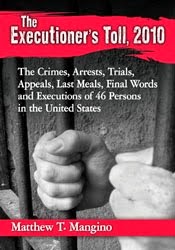President Joe Biden has laid out a $37 billion budget proposal for Congress to fund policing and crime prevention efforts across the country, a plan that would focus on hiring and retaining officers, intervention strategies, improving the criminal justice system and efforts to keep guns out of dangerous hands, reports Spectrum News NY1.
The announcement comes as violent crime remains high above
pre-pandemic levels, with homicide rates still up nearly 40% in major cities,
according to the Council
on Criminal Justice (CCJ). Robberies also increased by 19% in 2022
from the same period last year, and car theft is up 15 percent.
Biden detailed his “Safer
America Plan” in Wilkes-Barre, Pa., on Tuesday, a little over a month
since his COVID-19 diagnosis delayed an initial visit and announcement there.
"When it comes to public safety in this nation, the
answer is not 'defund the police.' It's fund the police," he said to applause
Tuesday at Wilkes University.
The plan is a proposal for the president’s fiscal year 2023
budget, which Congress can consider.
The policing part of the plan includes nearly $13 billion to
hire 100,000 officers over the next five years through the federal COPS Hiring
Program. The money would come in the form of grants “to recruit, train,
support, and manage” the officers in “effective, accountable community
policing," the proposal says.
It "takes a page" out of the 1994 crime initiative
that Biden helped spearhead under former president Bill Clinton, said Richard
Rosenfeld, a criminology expert and professor emeritus at the University of
Missouri-St. Louis. That plan also included hiring thousands of new officers,
which in turn did help reduce crime.
"In that sense, it's not a surprising plan coming from
the president," Rosenfeld said, adding that the "track record is
pretty good" when it comes to boosting police ranks.
Community policing has also long been a policy priority for
Biden, which involves assigning police officers to particular areas so they
become connected to the local population. Better relationships with officers
can lead to greater cooperation with police in a community.
"I'm old enough to remember when cops used to walk the
beat," he said.
"When it comes to fighting crime, we know what works:
officers on the street who know the neighborhood ... who know the families
they're protecting, who get the training they need to be able to do their jobs
well, who work to earn the community's trust," Biden added.
The Safer America plan would also include $1 billion for
training officers in a way that prioritizes “accountability, transparency, and
the well-being of state and local officers,” plus separate money focused on
officer well-being and retention.
"It appears to be what the public wants,"
Rosenfeld said of community policing. "It's an effective way of reducing
the tensions that exist between many communities, especially disadvantaged
communities of color, and the local police department."
The president also pointed to executive actions he's already
taken boost policing, such as one in May that focused on federal law
enforcement agencies and limited their use of force.
Biden on Tuesday also turned the focus back to guns, two
months after he signed into law the first sweeping, bipartisan reform law in
decades.
He once again urged Congress to ban assault weapons and
high-capacity magazines, an effort he helped push through when he was a senator
in 1994 before it expired in the early 2000s.
"I'm determined to ban assault weapons in this country!
Determined!" he roared
He also spoke about a horror that parents in Uvalde had to
endure: submitting DNA so their kids could be identified underneath AR-15
bullet wounds.
"We're living in a country awash with weapons of
war," Biden said. "What's the rationale for these weapons outside of
a war zone?"
Biden's Safer America plan would also include $1.7 billion
for the Bureau of Alcohol, Tobacco, Firearms and Explosives (ATF) to enforce
gun laws, including by hiring more agents and investigators.
All of this comes as post-pandemic crime rates remain higher
than in the years before COVID-19 largely shut down the country.
Homicides are up 39% midyear compared to 2019, according to
the CCJ.
Gun deaths remain the most concerning, according to
the Major Cities Chiefs Association, which includes police
executives representing the largest U.S. cities. U.S. health
officials recorded the highest number of firearm deaths ever in 2020,
with an average of 124 people dying per day.
Rosenfeld agreed that those are the most serious crimes, but
he said his one criticism of Biden's plan is that it doesn't place enough
emphasis on more common crimes like shoplifting or car break-ins. Larcenies,
which are thefts that don't involve the use of force, are up 20% this year
compared to 2021.
"They affect people directly or indirectly, because you
know someone who's been a victim of that type of crime far more frequently than
[you] would homicides or even other non-fatal gun violence," he said.
The plan does include a single effort to crack down on
organized retail theft and resale of stolen items online, Rosenfeld noted.
Asked why the announcement Tuesday took place in
Wilkes-Barre instead of a place like Philadelphia, where crime is more rampant,
White House press secretary Karine Jean-Pierre did not share any reasoning but
instead highlighted that Biden would make the speech near his hometown of
Scranton.
Pennsylvania is also a key swing state, and Biden will take
two more trips there within the next week, all ahead of November's midterm
elections. On Tuesday he voiced his support for Lt. Gov. John Fetterman in his
race for U.S. senator and Attorney General Josh Shapiro in his run for
governor.
The Safer America plan also includes $700 million for crisis
interventions related to mental health, plus a $15 billion for a proposed
Accelerating Justice System Reform grant program that communities can use to do
things like prevent violent crime, support formerly incarcerated Americans or
expand co-responder programs to prevent officers from having to intervene in
situations that may need something other than a law enforcement response.
To read more CLICK HERE











